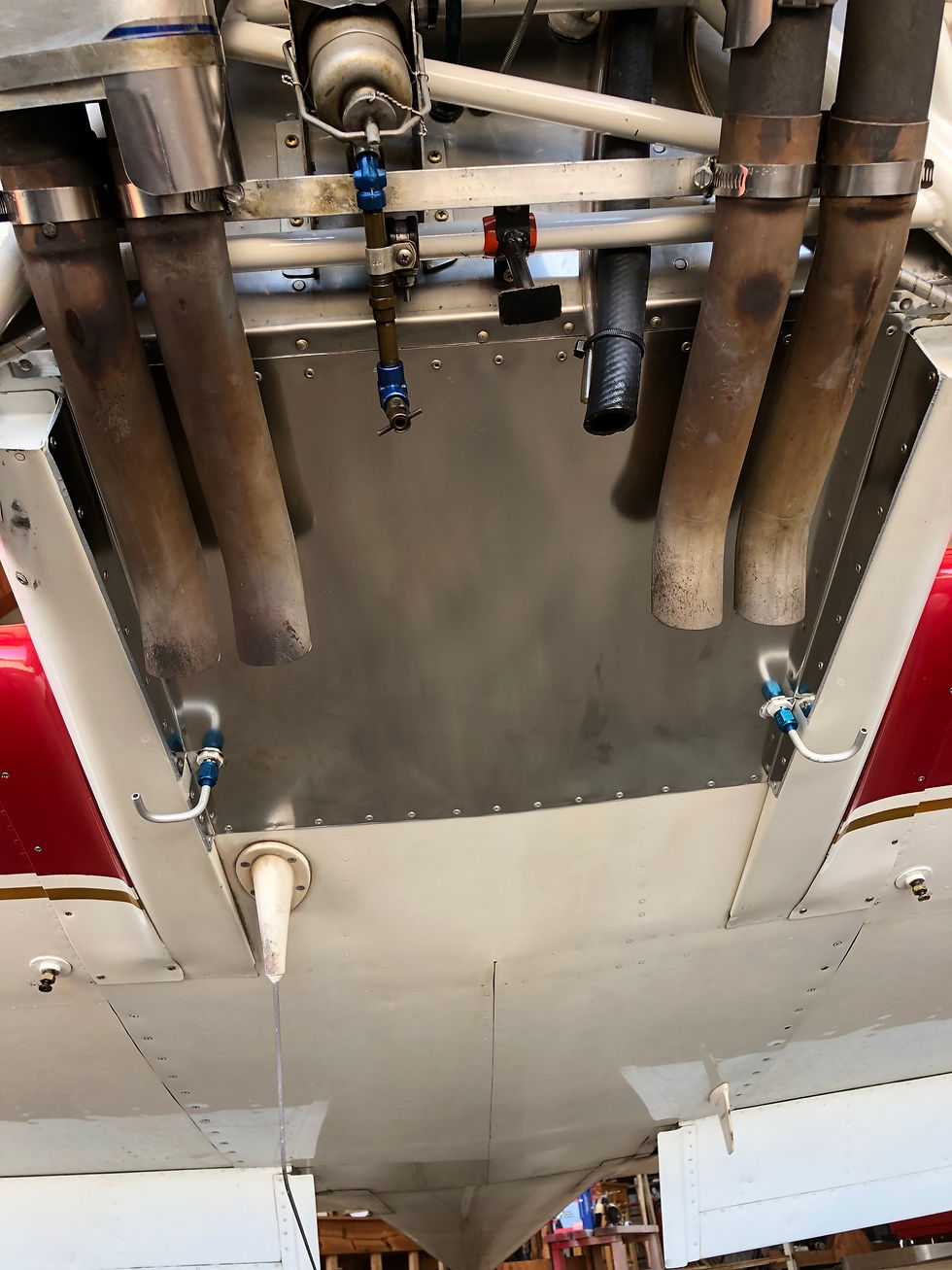Don't Bake the Expensive Electronics
- vac023

- Nov 21, 2019
- 4 min read
Heat is pleasant sometimes if you’re not a polar ice cap, but too much of it in the cockpit doesn’t help with personal comfort or the long-term health of electronics. In my previous job with the USAF, we encountered over-heating avionics issues when we started to turn our airplanes into flying computers and jet fuel into coolant. One of our primary test beds for the AOA project is my well-worn RV-4. And it has always been hot inside the cockpit. From a personal standpoint, it was annoying; but not a showstopper. I was used to hot, uncomfortable cockpits after flying fighters for 23 years. And the reason for the heat in the RV-4 was simple: the airplane is built according to plans and had no insulation inside or outside of the cockpit.
Large amounts of heat were transferred through the thin, non-structural stainless firewall and aluminum cockpit floor, which was within a couple inches of four very hot exhaust pipes that exit the cowling right under my feet. Because instrument panel space is so limited on the small panel of the -4, my avionics are mounted in a stack below the panel and between my legs—again, an arrangement we used in fighters with limited room in the cockpit. Until recently, those avionics were pretty basic: an old, reliable KT-76A transponder and bullet-proof MX-11 radio. The cutting edge of mid-fifties tech didn’t seem to be bothered much by all of the heat radiated into that small metal cabinet forward of the stick. But as we modified the airplane for Gen 2 AOA systems, we had to pull the avionics stack and do lots of re-wiring; so it was time to bite the ADS-B bullet in the form of a brand new Garmin GNX-375 and GTR-200 radio with built in stereo intercom in addition to our AOA electronics, all of which had to be shoe-horned into the avionics stack.
During a couple of test flights to dial in the new fuel computer we needed for the AOA testing, it rapidly became apparent those avionics were getting hot. Really hot. Too hot to touch. I missed the electrical engineering part of electrical engineering school, but I’m pretty sure if something is too hot to touch, it’s probably not too happy (unless it’s a vacuum tube), even if it has an internal cooling fan. Fortunately, Dan Horton over on the VAF forums has already done all of the homework and was very gracious with help and advice when I emailed him. His advice is pretty straight forward: insulate properly or don’t insulate at all. If you do insulate for the purpose of reducing heat, insulate on the outside (of the firewall and fuselage), putting it pretty simply: “you wouldn’t wear a raincoat under your clothes, would you?”
So started yet another modification to the airplane to help with AOA testing: insulating the bottom of the fuselage behind the firewall and above the hot exhaust pipes. The accepted solution for this is a sandwich of fiberfrax ceramic fire-proof insulation and stainless steel (or titanium), fastened to the fuselage tunnel (lower surface) with stainless rivets and sealed with high temperature silicone. Because nothing is ever easy, and the mighty RV-4 is a hand-built airplane, it’s much easier to do this if you drop the exhaust system off the engine to allow access and precise measurements.
The most difficult part of the job is to layout the sheet-metal design for the stainless shield. I used blue masking tape and marked that with a sharpie, pulled the tape and transferred it to the sheet metal. You’ll need to pull out your sheet metal “how to” to properly calculate set back for the bends. You also need to reduce overall lateral dimension by 2 times the thickness of your insulation, otherwise you’ll be making a second version (ask me how I discovered that!). Properly fitted, this shield can be held in place with pop rivets along the perimeter. It was necessary to disassemble the cockpit to be able to drill for the pop rivets without interfering with existing structure. This ceramic/stainless shield also serves as a belly firewall for additional protection in the event of inflight fire. Most importantly, however, this shield blocks most of the radiant heat of the exhaust pipes and really cools down the now expensive avionics stack. So, objective achieved.
This “little” project and five (yup, five) iterations of new fuel lines to accommodate the “red cube” fuel flow transducer in the crowded RV-4 engine compartment took over a month to finish. Shout-out to Clint at Vetterman Exhaust who fabricated some replacement parts for me that had, not surprisingly, worn out after only 25 years in service and Tom at TS flight lines for his patience and outstanding support.
We are back to AOA flight test and yours truly, the stick monkey, is once again in the "dog watching TV" mode of trying to get all of the software working and electrons flowing in the right direction...with a lot of help from the outstanding FlyONSPEED team, of course.




Comments